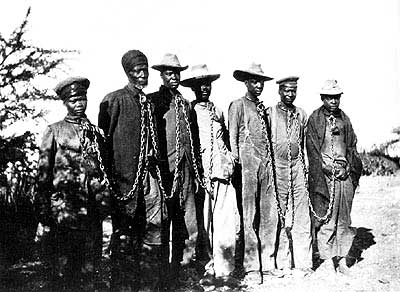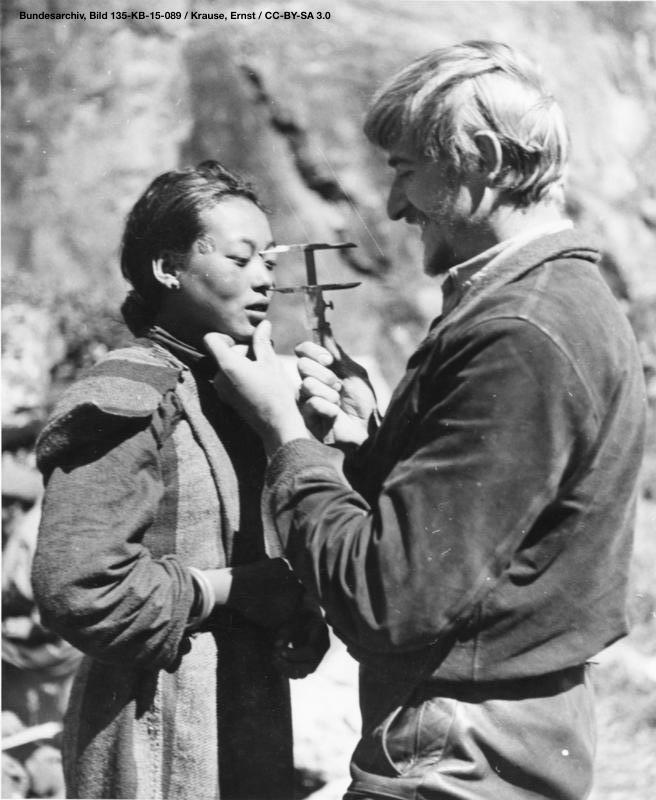Every now and then a strange phrase is uttered by German politicians, often as a warning: Sonderweg.
Literally ‘special path’ or ‘way’ it referrers to the the early 20th century independent, selfish, and shall we say, ill- advised policy decisions of a nationalist, chauvinistic Imperial Germany.
History shows us that this path led to a bloody world. The structure of the EU today is a legacy of this. Germany is bound together with other nations, all with a common policy decision making process.
Politicians sound the alarm when there is a hint of sonderweg. It’s almost as if the sonderweg is a German trait they might not be able to resist in the future, like some weird magnetism.
It could be argued WWI and WWII were a product of the sonderweg thinking. But there are dark episodes in German behaviour that occurred even before WWI.

Today, Germany has acknowledged responsibility for the genocidal war waged against tribal groups in Namibia between 1904 and 1907. It has agreed to pay over 1 billion Euro in compensation. Germany’s examination of its own more recent past makes this colonial period painfully shameful, but gives it perhaps an ability to acknowledge its mistakes more readily than other countries.
In 1897, in what was then called German Southwest Africa (now Namibia), famine and pestilence wiped out the herds of the Herero peoples. Destitute, many gravitated to German controlled farmsteads looking for a way to survive. This quickly turned them into serf slaves. By 1904 this situation had become intolerable and they rose up, only to be driven into the desert to die, or be mown down by German forces under General von Trotha, called in to fix things by Kaiser Bill. Some 60,000 Herero people perished.
There was a second Namibian tribe that was also persecuted – the Nama or Namaque. Better known in European racist jargon of the time as ‘the Hottentots’. They too were shot and incarcerate in camps where many died.
The pseudo-scientific, social-Darwinian thinking, driving and justifying racist colonial policy, was already well established globally. A repulsive legacy of the Herero killings was the forcing of surviving women to de-flesh skulls with glass shards for their preservation and transport back to Berlin. Here they could be used to advance careers at the recently founded ‘German society of racial hygiene’.
One of the men who organised this body-part trade from Namibia was called Felix von Luschan. He was an anthropologist and archaeologist, who excavated with Robert Koldewey, later famed for his Babylon discovery of the Ishtar Gate, in Berlin’s Pergamon Museum we can visit today.
These pseudo-scientific disciplines continued, and later fell easily into step with the racist polices of the Nazis.
Here the Namibian genocide surfaces again, laughably so, if it wasn’t so disgusting.
Heinrich Himmler created a department investigating the origins of Nordic ‘races’ called ‘Ahnenerbe’ – or ‘ancestral heritage’. Eventually it became a part of the main security apparatus and had offices on the Brüderstraße, next door to where Berlin is now building the House of One.
Broadly, this organisation was a gaggle of ‘academics’ bent on proving archaeologically the racial theories of the origin’s and superiority of the ‘Aryan’. Excavations and expeditions were conducted all over the world, measuring crania and noses and searching for ethnic groups who escaped the flooding of Atlantis.

One of these characters was a man called Berger, who died in 2009. After the war, he was exonerated, despite having been instrumental in the expansion of the Ahnenerbe’s skeleton collection, partly composed of Auschwitz victims.
One of the most pathetic lines of study that Beger worked on relates to Namibian genocide. It was inspired by his boss Heinrich Himmler. Himmler was interested in late Palaeolithic period ‘Venus figurines’. These are ubiquitous around Europe and the near east, represent exaggerated female forms, and are some of the earliest art work ever found.
They are intriguing, with their hints at religious beliefs, a ‘female creator’ concept. Perhaps they were for cult usage, centred around the reproductive and nurturing capacity of the female.

This was not what Himmler thought. He saw a connection between these prehistoric figurines and the Nama ‘Hottentot’ people of Namibia. Why? Because they both had large posteriors thought Himmler. Perhaps their forebears had been expelled from Europe when the master Aryan arrived?
Himmler thought on. Jewish women often had large rears too. Could they also be a prehistoric group driven from Europe by the master race? Beger investigated this ‘theory’. Yes, he thought, there seems to be connection in the posteriors ‘between Hottentots, North Africa and Near eastern peoples’. This led to a photographic study of concentration camp female Jewish prisoners for further investigation.
Many of these basic ideas of the Ahnenerbe are still currency today, amongst unpleasant or crack pot groups and conspiracy theorists. or D list documentary makers (wisdom of the pyramids type stuff).
Perhaps todays official acknowledgement of the horrors of the German state acting on racist theories a century ago in Namibia might start a path to reconciliation, and the examination and sloughing these dangerously divisive concepts.
